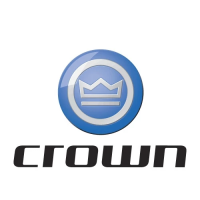87
M2.0-1055-007
HYDRAULIC
Hydraulic Circuits
As hydraulic fluid leaves the cylinders, it passes
through the flow control valve of the carriage cylinder
and the velocity fuse of the mast cylinder. Neither of
these components restrict or inhibit the flow of hydrau-
lic fluid during normal hydraulic system operation. The
function of these two components is to prevent the
mast from making to quick of a decent in the event of a
plumbing failure. The hydraulic fluid flows through the
SVH and into the LCV. The maximum lowering speed
is limited by the pressure compensated flow regulator,
LCV. Hydraulic fluid passes through the SPL and back
to the reservoir.
Tilt and Accessory Flow
Refer to Figure 15994. Any accessory command will
energize the pump motor and proportionally energize
the coil of SPA. SPA spool will shift and allow oil flow
after PCA to SVA1 (and SVA2 if the truck is so
equipped), SVT, RVA, and ORF1. Oil flow after SPA will
also be directed into a pilot passage on the spring side
of PCA, causing a change in the pressure differential
across PCA. That change in pressure differential will
cause PCA to shift and deliver the required amount of
oil flow to satisfy the accessory demand. Using this
pressure differential, PCA will provide consistent ac-
cessory speed regardless of the load. Any excess flow
after PCA not used in accessory operation will be sent
back to the reservoir by SVB.
When the accessory command is released, SPA will
de-energize and return to its closed position. The func-
tion of ORF1 is to allow the pressure trapped in the ac-
cessory circuit to bleed off, allowing PCA to operate at
the lowest possible pressure drop when an accessory
is not being operated.
RVA is set to protect the accessory circuit by going into
relief at 17237 kPa (2500 psi).
Tilt
SVT, the solenoid valve for tilt is a three position valve
with two coils. A Tilt Command will energize one of the
two coils, depending on which direction of Tilt was se-
lected.
Figure 15994
Suction
Return
Relief
Pressure
Crown 2007 PF15675-7

